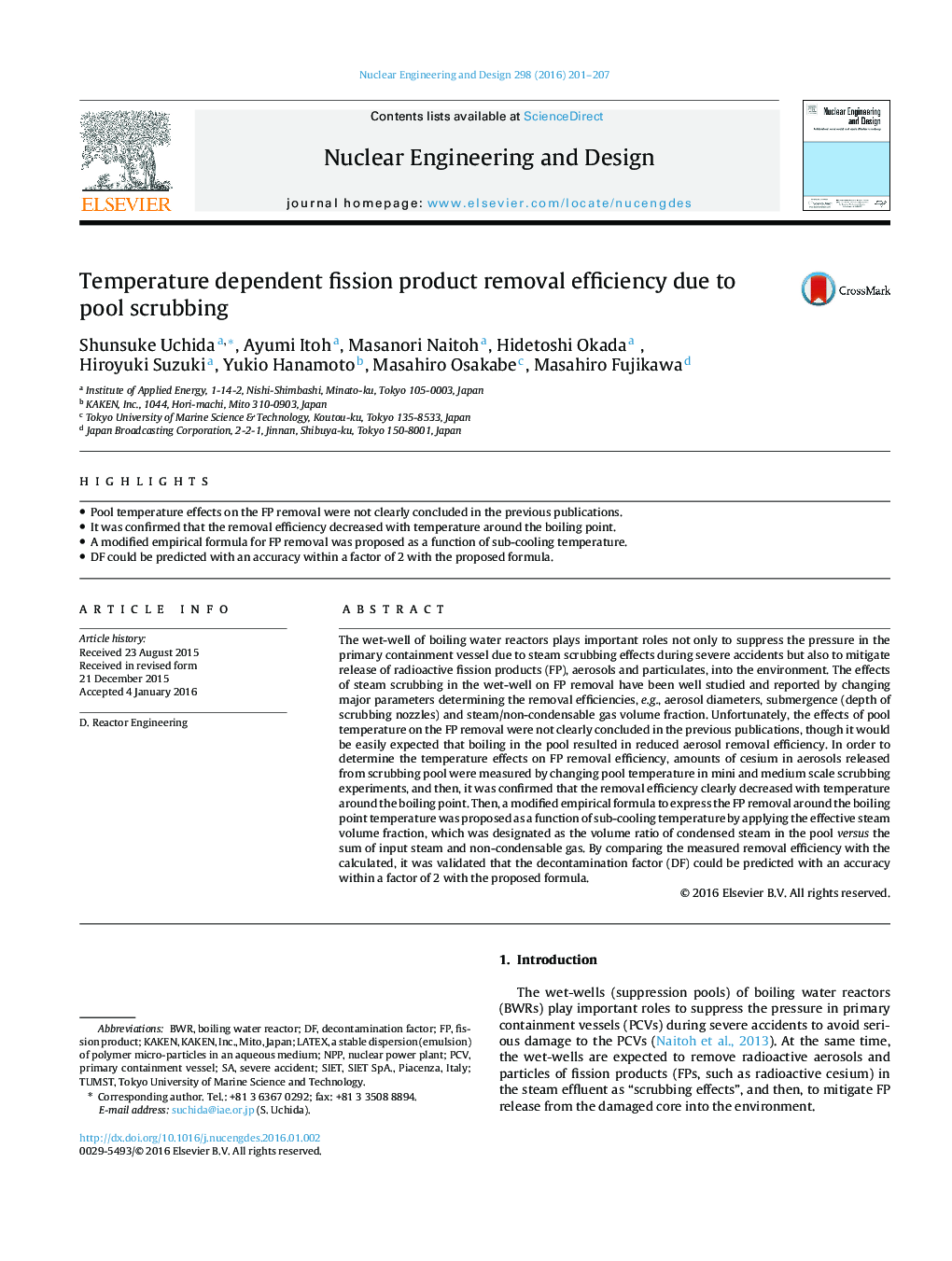| Article ID | Journal | Published Year | Pages | File Type |
|---|---|---|---|---|
| 6760113 | Nuclear Engineering and Design | 2016 | 7 Pages |
Abstract
The wet-well of boiling water reactors plays important roles not only to suppress the pressure in the primary containment vessel due to steam scrubbing effects during severe accidents but also to mitigate release of radioactive fission products (FP), aerosols and particulates, into the environment. The effects of steam scrubbing in the wet-well on FP removal have been well studied and reported by changing major parameters determining the removal efficiencies, e.g., aerosol diameters, submergence (depth of scrubbing nozzles) and steam/non-condensable gas volume fraction. Unfortunately, the effects of pool temperature on the FP removal were not clearly concluded in the previous publications, though it would be easily expected that boiling in the pool resulted in reduced aerosol removal efficiency. In order to determine the temperature effects on FP removal efficiency, amounts of cesium in aerosols released from scrubbing pool were measured by changing pool temperature in mini and medium scale scrubbing experiments, and then, it was confirmed that the removal efficiency clearly decreased with temperature around the boiling point. Then, a modified empirical formula to express the FP removal around the boiling point temperature was proposed as a function of sub-cooling temperature by applying the effective steam volume fraction, which was designated as the volume ratio of condensed steam in the pool versus the sum of input steam and non-condensable gas. By comparing the measured removal efficiency with the calculated, it was validated that the decontamination factor (DF) could be predicted with an accuracy within a factor of 2 with the proposed formula.
Keywords
Related Topics
Physical Sciences and Engineering
Energy
Energy Engineering and Power Technology
Authors
Shunsuke Uchida, Ayumi Itoh, Masanori Naitoh, Hidetoshi Okada, Hiroyuki Suzuki, Yukio Hanamoto, Masahiro Osakabe, Masahiro Fujikawa,
